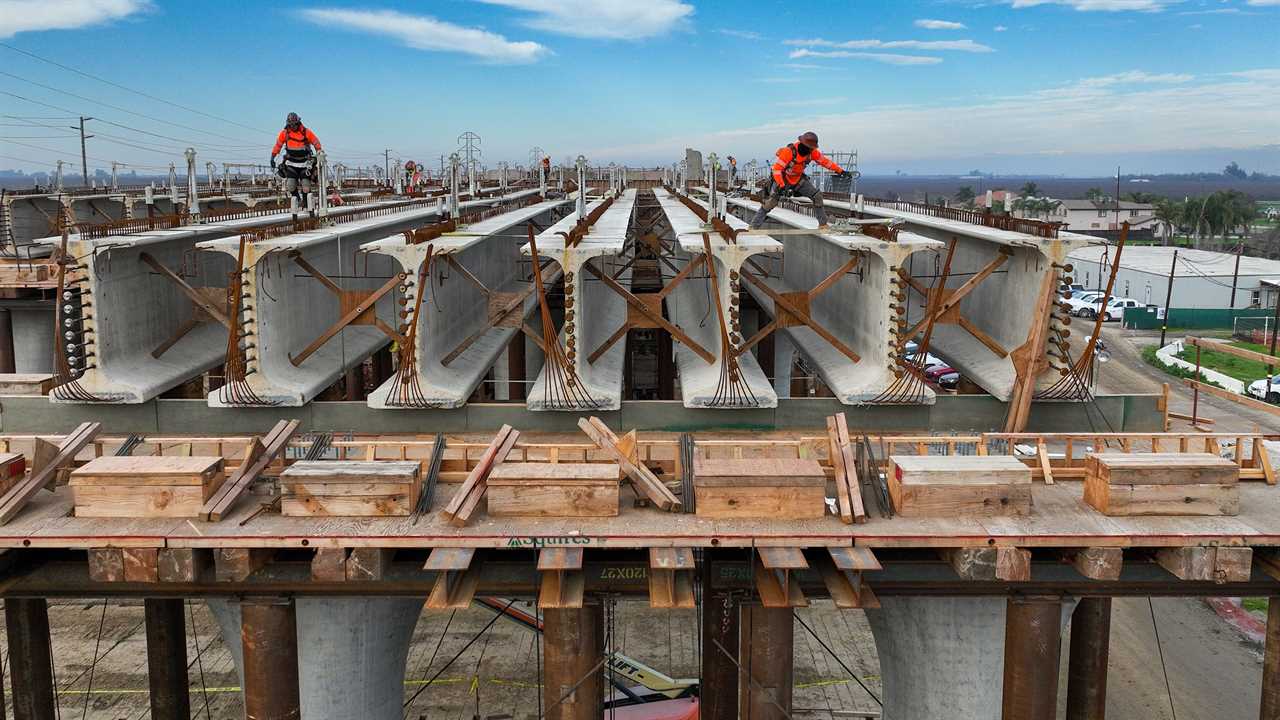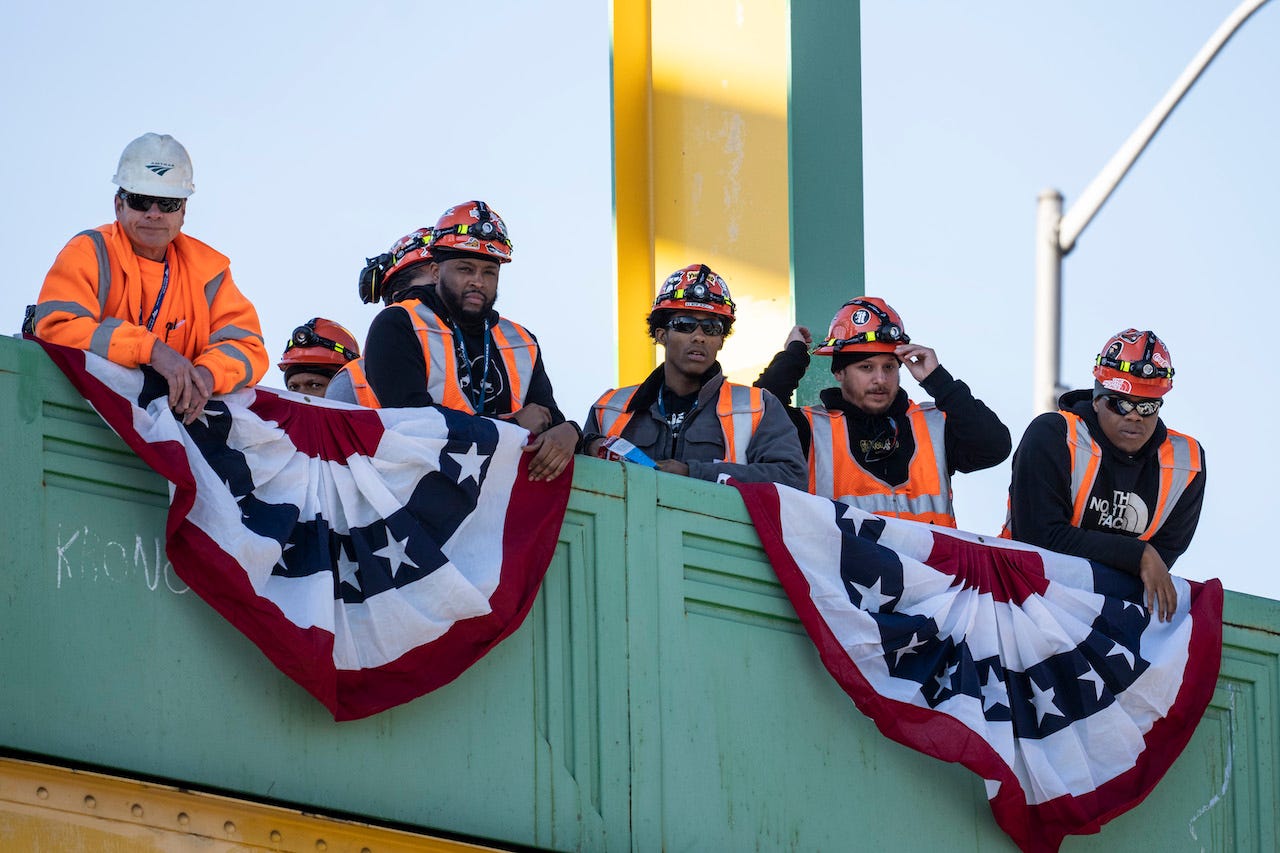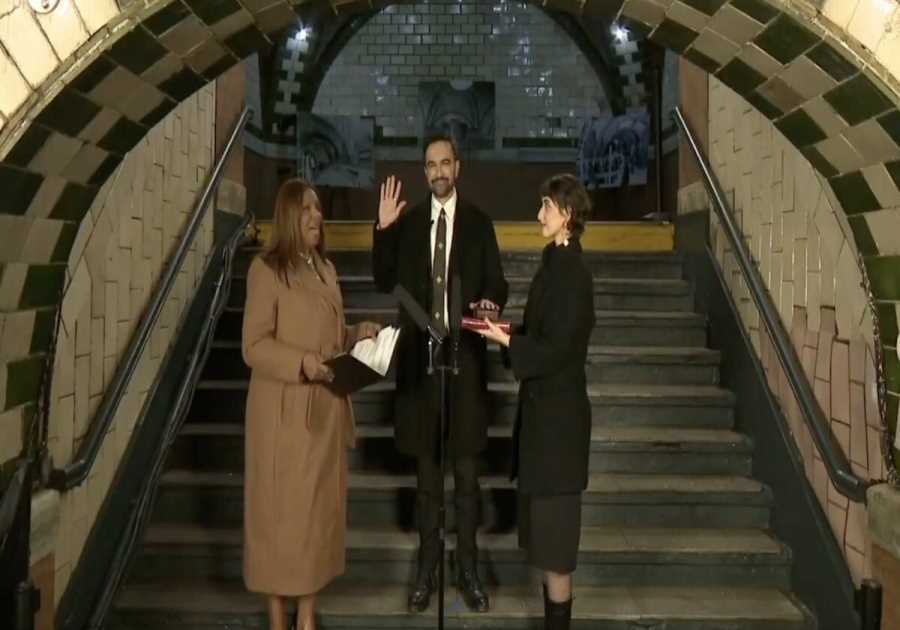
Robert Gauthier/Getty Images
- The US needs to invest $2.6 trillion in infrastructure over the next decade, civil engineers say.
- President Joe Biden has signed three laws aiming to fund infrastructure projects nationwide.
- This article is part of "Transforming Business: Infrastructure," a series exploring the advancements reshaping US infrastructure.
The state of US infrastructure is bad. The American Society of Civil Engineers gave it a C-minus in 2021 and said the US needed about $2.6 trillion in infrastructure investment over a decade.
Luckily, infrastructure investment is one of the few remaining bipartisan priorities. And after years of unfulfilled infrastructure promises in Washington, President Joe Biden has signed three major bills into law — the Infrastructure Investment and Jobs Act of 2021, the Inflation Reduction Act of 2022, and the CHIPS and Science Act of 2022 — designed to funnel hundreds of billions of dollars into various infrastructure projects across the country.
Most of the work that's needed is in repairing and maintaining existing infrastructure, experts say. Transportation requires the most resources, but major investments are also needed in water, energy, and broadband-internet expansion. Much of our built environment is aging and stressed by population growth and climate impacts.
"We're pretty assuredly, according to the data, in an era of repair and replacement," Joseph Kane, a fellow at the Brookings Institution who specializes in infrastructure, said. "Yes, there is a need for some new facilities, but by and large, a lot of our infrastructure is worn out."
And in some cases, communities actually have too much infrastructure — such as an underused highway or water system.
"We have built way too much infrastructure, and we really have no plan or capacity to actually take care of all that we have built," Charles Marohn, a land-use planner and the founder of the urbanism nonprofit Strong Towns, said.
One way to address this is to build denser communities so that more people use — and pay for — the infrastructure. This would also help address the country's severe housing shortage and affordability crisis.
"This is an awesome opportunity to go in and build a lot of housing in existing neighborhoods and get it connected to systems that need more users," Marohn said.
But simply throwing money at our infrastructure problems isn't going to fix them. We suffer from a multitude of policy and planning challenges, including a need to redesign transportation infrastructure to be greener and more inclusive, build more sustainable and efficient water systems, and prioritize small-scale high-impact projects at the neighborhood level.
With hundreds of billions of dollars in new funding, the US has a rare opportunity to invest in critical infrastructure that could reshape the country's transportation, water, energy, and broadband. Kane and Marohn say that rethinking how we design infrastructure will be key to building a healthier, more sustainable future. This means prioritizing projects such as redesigning roads to accommodate pedestrians and bicyclists and expanding mass transit over widening highways and building new roads.

Drew Angerer/Getty Images
Rethinking how we build and rebuild infrastructure
When we think of infrastructure, we often envision major projects, including constructing bridges and highways, expanding airports, and building out the power grid. Multibillion-dollar projects — such as a bullet train from Los Angeles to San Francisco or an expansion of the Long Island Rail Road in New York — are often massively delayed and over budget.
Many crucial projects that have a disproportionate impact on communities are much smaller in scale. But cities and states are incentivized to focus on major, federally funded projects because that's where the money is. The focus on winning federal funding means many state and local governments' infrastructure priorities are more responsive to what the White House and Congress want than what a local community wants and needs.
"In practice, it's really hard for the federal government to do a project that's less than half a million dollars, and a lot of the projects that are needed desperately right now are $5,000, $10,000, and $20,000 projects," Marohn said.
These include nonvehicle transportation projects such as pedestrian bridges and urban bike paths and neighborhood-level projects like park improvements.
Marohn added that resources were also wasted in pursuit of federal cash: "Instead of spending $100,000 on five small neighborhood projects, we hire a grant writer for $100,000 to pursue the big federal project."
Marohn pointed to the Texas Department of Transportation's plan to expand an interstate, I-35, that runs through downtown Austin, despite significant opposition from Austinites. Opponents argue the expansion will attract more vehicle traffic, while displacing residents and business owners in its path. The $4.5 billion highway project is set to be buoyed by federal funds.
Both Kane and Marohn say that the US doesn't have effective or consistent definitions of success when evaluating projects. In many cases, we use outdated 20th-century metrics of success. For example, road performance is generally judged based on how quickly cars and trucks can move on them, rather than on whether people have options to navigate the roads outside cars, whether that's walking, riding a bicycle, or traversing some other way, Kane said.
"We haven't developed a consistent set of tools or benchmarks to even gauge the performance, like the physical performance of all these systems, let alone the ROI, or the return on investment, for how this money could support a more equitable, affordable, higher-performing system in the 21st century," Kane said.
Even with the unprecedented new funding for climate and green initiatives, federal infrastructure spending on transportation heavily favors cars, trucks, and other wheel transportation. More than half of the infrastructure law's $1.2 trillion in funding has been designated for road improvements and highway expansion projects, a recent analysis by Transportation for America found.
The Biden administration has touted its grant program — part of the Infrastructure Investment and Jobs Act — that funds the removal of underused highways and train tracks that divide often marginalized communities. In one major project, the US Department of Transportation awarded Michigan's DOT and the city of Detroit $100 million to replace a portion of an interstate that runs through a historically Black neighborhood in the city with a pedestrian boulevard. While the Reconnecting Communities and Neighborhoods Grant Program has "the most potential" to do good, Marohn said, it serves largely as marketing for the administration's vehicle-focused transportation policy.
When it comes to water infrastructure, many communities aren't up to speed on greener, nature-based solutions to runoff and sewage — including rain gardens and forest buffers — that can be more cost-effective, resilient, and sustainable than older centralized systems.
Inflation, worker shortages, and other obstacles
Across the country, there are some key practical challenges to implementing infrastructure projects.
One obstacle is inflation. Construction companies that build all kinds of infrastructure are dealing with price inflation that's much higher than that hitting regular consumer products. It's also taking longer for essential construction materials to be shipped after they're purchased. This means the money allocated by the Biden administration's legislation likely won't go nearly as far as intended.
A 2022 Brookings analysis found that if inflation was 2.3% higher than expected each year, "it would effectively cause infrastructure industries to lose $137 billion in estimated buying power via federal spending." Cities and states also need a certain amount of their own cash to make these infrastructure investments happen. Federal funding for most projects requires local governments to match between 10% and 51% of the spending.
Another big obstacle is the serious shortage of construction workers and other talent. Unemployment in the construction industry is the second lowest on record, and job openings are at record highs — more workers are desperately needed. Associated Builders and Contractors, an industry trade group, estimates that the US will need about 500,000 new construction workers in 2024 and 2025 to meet the demand for labor. And there's no immediate fix to this problem in sight, despite a slew of efforts across the country to train and retrain workers. Congress has consistently failed to address one key lever: immigration policy.
Because infrastructure needs to be actively maintained over time, the costs associated with construction don't end when the project is complete. A city or state needs the funding, materials, and skilled workers to do regular maintenance and avoid the much-higher costs associated with neglect.
"There's a whole project life cycle that can lead to continued costs and struggles over time," Kane said.
Overcoming barriers
Local governments and employers across the country recognize many of the challenges to building and maintaining major projects.
Blue and red states alike are expanding workplace opportunities and apprenticeships for high schoolers and others. The federal government is also supporting these efforts. Under the Infrastructure Investment and Jobs Act alone, 72 programs "emphasize or allow some type of workforce development activity," a Brookings report found.
Montana, which has seen a surge of new residents and demand for housing in recent years, has passed a tax credit for employers who send their employees to trade school, allows high schoolers to get school credit for working up to 20 hours a week at a job site, and changed the ratio of trained workers to trainees, Gov. Greg Gianforte told Business Insider.
"We created more apprentices last year in the state of Montana than we did the prior three years combined," he said.
If used effectively, the flood of new federal funding for infrastructure could help connect Americans to each other — both physically and digitally — and train the next generation.
Read More
By: [email protected] (Eliza Relman)
Title: Biden's laws are pouring billions into new infrastructure and it could be a rare opportunity to make communities safer and more sustainable
Sourced From: www.businessinsider.com/biden-laws-us-infrastructure-invest-funding-2024-3
Published Date: Mon, 11 Mar 2024 18:51:48 +0000
.png)





